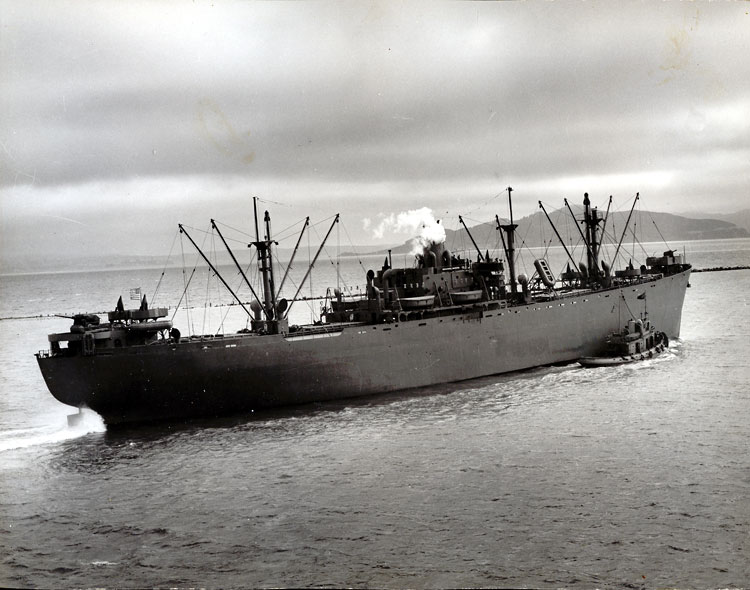Referred to as “an ugly duckling” by Time Magazine, the “Liberty Ship” was the name given to the EC2-type ship which was designed for emergency construction by the U.S. Maritime commission during WWII.
In early 1941, Roosevelt announced a $350 million emergency shipbuilding program. Its goal? To quickly, efficiently, and economically produce in three years over half of the existing pre-war merchant fleet.
Eighteen American shipyards mass-produced 2,710 Liberty Ships between 1941 and 1945, making it an immensely iconic image for the U.S. throughout WWII. Of these eighteen shipyards, the first to take on the task was Baltimore’s Bethlehem-Fairfield Shipyards, which at its peak had over 46,000 workers, including 6,000 African-Americans, who worked around the clock.
From the shipyard’s first opening in 1941 until the construction of its last ship, the Atlantic City Victory, the yard had produced more vessels than any other American shipyard. Throughout this time the workers had constructed a total of 384 Liberty ships, the first of which, the Patrick Henry, took eight months to complete and launched on the 27th of September the same year.
Throughout the production of the Liberty ships, the yard workers also constructed 94 Victories and 30 LST’s, which, with the inclusion of the Liberty, amounted to 508 vessels throughout the yard’s four-year stint.
The ship’s initial public image at the start was bleak to say the least. Roosevelt himself labelled the construction as “a dreadful looking object”, though to try to assuage public opinion he exclaimed the new class of ships would bring liberty to Europe. This proclamation is what gave rise to the vessel’s unofficial name.
At first it seemed that the production time for building the ships was slow – the first batch taking around 230 days to complete. The workers had not previously trained for the welding style of the ship, but as time went by and they gained experience, the average construction time managed to drop to around 42 days, The Dark Room reports.
The Patrick Henry, first of the Liberties, had the job of exporting vital cargoes to and from Casablanca and various other North Africa ports. She sailed through Western Europe, South and East Africa, and Russia. Despite the failed attempts to sink her, she carried on. In 1946, though, she scraped her hull off the coast of Florida and was laid to rest in Mobile, Alabama with the other retired Liberties.
After the war, 2400 of the 2710 Liberty ships produced made it back to the U.S. intact. Of these, many made up the post-war cargo fleet, while a smaller proportion were sold to Greece and Italy. Today only a few still exist; two as operational museum ships.
The Liberty Ship’s production was an immense one. The sheer number of ships built, the often-overlooked roles that women played in its construction, and its survival rate during the war make the Liberty ship a subject of much public interest. It is quite possibly one the most historical ships ever produced.
